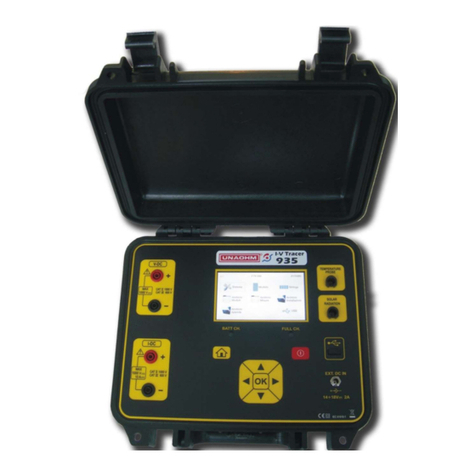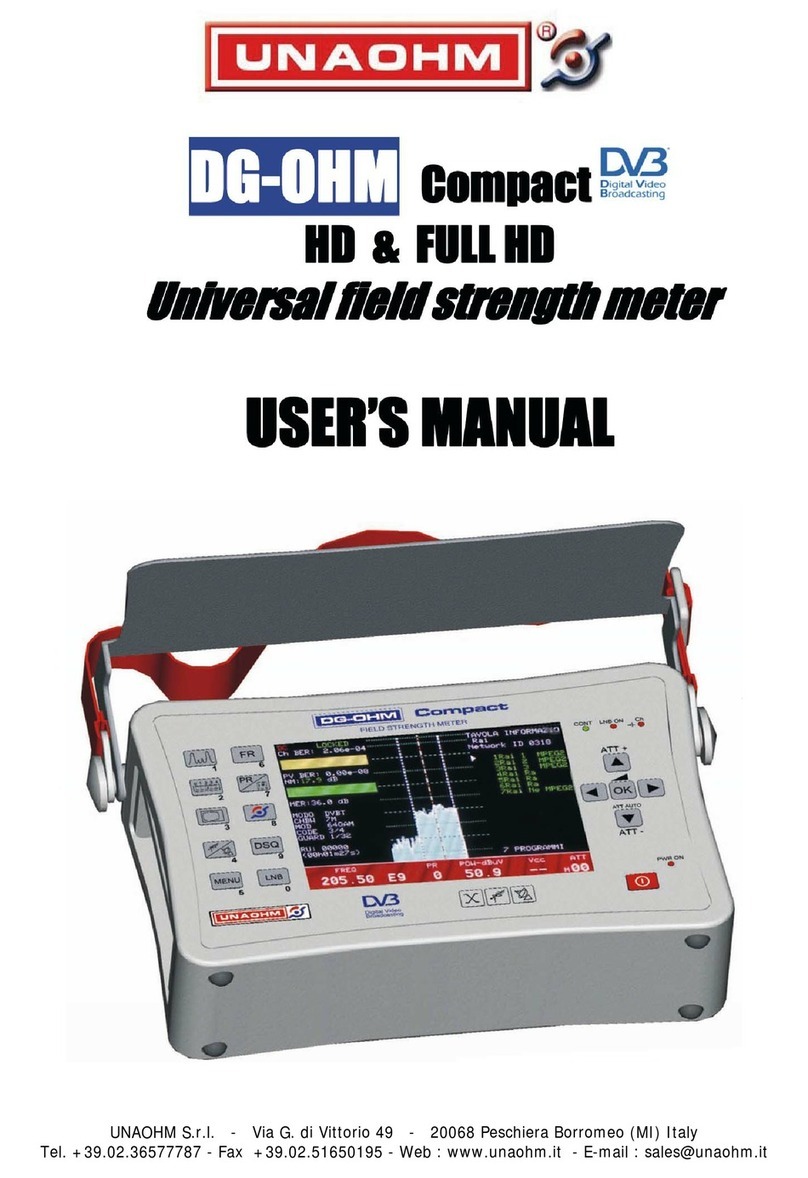
AP401FULL- HD_rev. 09_UK
2
4.13.3.DISEQC MENU ..................................................................................... 26
4.13.3.1.
USING THE DISEQC SCR FUNCTION ................................................. 27
4.14.SOUND ...................................................................................................... 28
4.14.1.FOR TERRESTRIAL CHANNELS .............................................................. 28
4.14.2.FOR SATELLITE CHANNELS................................................................... 28
4.15.SPECTRUM ANALYZER................................................................................. 29
4.15.1.USING THE MARKERS........................................................................... 29
4.15.2.SPECT MENU ....................................................................................... 30
4.15.2.1.
SPECTRUM GRID............................................................................. 30
4.15.2.2.
SPECTRUM SCALE ........................................................................... 30
4.15.2.3.
LEVEL INDICATOR (using the level indicator)..................................... 30
4.15.2.4.
HOLD FUNCTION ............................................................................ 30
4.16.DATA LOGGER............................................................................................ 30
4.17.THE MAIN MENU ........................................................................................ 32
4.17.1.MAIN MENU FUNCTIONS ...................................................................... 32
4.17.1.1.
DATE.............................................................................................. 32
4.17.1.2.
TIME .............................................................................................. 32
4.17.1.3.
CONFIGURATION ............................................................................ 32
4.17.1.4.
NOISE GENERATOR......................................................................... 32
4.17.1.5.
LANGUAGE ..................................................................................... 32
4.17.1.6.
PLUG and PLAY ............................................................................... 32
4.17.2.BUTTONS WITH SECONDARY FUNCTIONS ............................................. 32
4.18.MENU CH (CHANNEL).................................................................................. 33
4.18.1.CHANNEL TABLE .................................................................................. 33
4.18.2.SEARCH CHANNEL................................................................................ 33
4.18.3.LTE ..................................................................................................... 34
5.DIGITAL MEASUREMENTS .............................................................................. 34
6.DEMODULATOR CARDS FOR DVB-S/S2, DVB-T/T2, DVB-C................................. 35
6.1.INTRODUCTION ......................................................................................... 35
6.2.MEASUREMENTS IN QPSK / 8PSK................................................................. 35
6.2.1.USE OF THE CARD ............................................................................... 36
6.2.2.TECHNICAL CHARACTERISTICS............................................................. 36
6.3.MEASUREMENTS IN OFDM (DVB-T/T2)......................................................... 37
6.3.1.CH BER, POST VITERBI BER and BCHBER .............................................. 37
6.3.2.MER in OFDM....................................................................................... 37
6.3.3.NM (Noise Margin)................................................................................ 38
6.3.4.RU ...................................................................................................... 38
6.3.5.CSI (Channel Status Information) .......................................................... 38
6.3.6.USE OF THE CARD ............................................................................... 38
6.3.7.AER (Adaptive Equalizer Response) in OFDM .......................................... 39
6.3.8.TECHNICAL CHARACTERISTICS............................................................. 40
6.4.MEASUREMENTS IN QAM ............................................................................ 41
6.4.1.CH BER in QAM .................................................................................... 41
6.4.2.MER in QAM......................................................................................... 41
6.4.3.NM (Noise Margin)................................................................................ 41
6.4.4.RU ...................................................................................................... 41
6.4.5.Use of the Card .................................................................................... 42
6.4.6.Technical characteristics ....................................................................... 42































